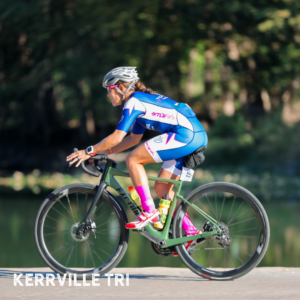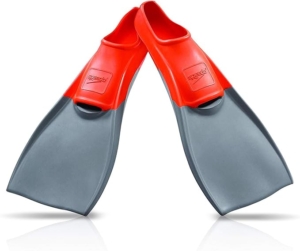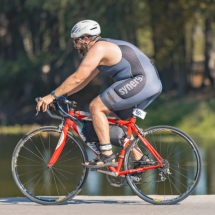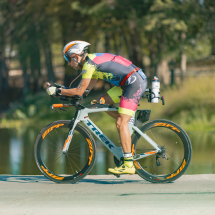Triathlons come in various distances, each presenting unique challenges and rewards. Among them, the Half Iron distance, also known as a 70.3 triathlon, stands out for its balance of endurance and speed. This guide will explain what a Half Ironman is, the origins of its name, and how different triathlon distances are categorized.
What is a Half Iron Distance?
A Half Iron triathlon, also known as a 70.3 triathlon, consists of:
Swim: 1.2 miles (1.9 kilometers)
Bike: 56 miles (90 kilometers)
Run: 13.1 miles (21.1 kilometers)
The total distance covered is 70.3 miles, which is why it is commonly referred to as a 70.3 triathlon. This race format is popular among triathletes looking for a significant challenge beyond the Olympic distance but not as demanding as a full Iron distance event.
Understanding the Trademark and Naming Conventions
The term “Ironman” is a registered trademark of the World Triathlon Corporation (WTC). This trademark encompasses their series of long-distance triathlon races, including both full Ironman and Ironman 70.3 events. Due to this trademark, other race organizers must use different names for similar distances.
Non-Ironman branded events often use terms like “Half Iron” or “middle distance” to describe the 70.3-mile race. These names help distinguish the events while still conveying the race’s challenge and scale.
Different Triathlon Distances Explained
Triathlons come in a range of distances to accommodate athletes of all experience levels. Here are the most common race formats:
1. Sprint Distance:
Swim: 0.5 miles (750 meters)
Bike: 12.4 miles (20 kilometers)
Run: 3.1 miles (5 kilometers)
Ideal for beginners, Sprint triathlons offer a fast and intense race experience.
2. Olympic Distance:
Swim: 0.93 miles (1.5 kilometers)
Bike: 24.8 miles (40 kilometers)
Run: 6.2 miles (10 kilometers)
The Olympic distance, also known as the standard distance, is featured in the Summer Olympics.
3. Half Iron Distance:
Swim: 1.2 miles (1.9 kilometers)
Bike: 56 miles (90 kilometers)
Run: 13.1 miles (21.1 kilometers)
This distance offers a substantial endurance challenge, perfect for athletes moving up from the Olympic distance.
4. Full Iron Distance:
Swim: 2.4 miles (3.8 kilometers)
Bike: 112 miles (180 kilometers)
Run: 26.2 miles (42.2 kilometers)
The ultimate test of endurance, the full Iron distance requires extensive training and preparation.
Why Choose a Half Iron Distance?
The Half Iron distance is ideal for athletes looking to push their limits without the extensive time commitment required for full Iron distance training. It provides a significant endurance challenge and can serve as a stepping stone for those aspiring to complete a full Iron distance triathlon in the future.
Half Iron Distance Races in Texas
Texas is home to several high-quality Half Iron distance races, offering diverse landscapes and unique challenges. Some notable events include:
1. Ironman 70.3 Texas (Galveston, TX):
– Set along the Gulf Coast, this race features a saltwater swim, a flat bike course, and a scenic run along the seawall.
2. Ironman 70.3 Waco (Waco, TX):
– Known for its scenic Brazos River swim, this race also includes a rolling bike course and a run through historic Waco.
3. Kerrville Triathlon Festival (Kerrville, TX):
– Located in the beautiful Texas Hill Country, this event offers a swim in the Guadalupe River, a challenging bike ride through rolling hills, and a run along the Kerrville River Trail.
Why Race the Kerrville Triathlon Half?
The Kerrville Triathlon Festival stands out for several reasons, making it a top choice for Half Iron distance enthusiasts:
1. Scenic Course:
– The swim takes place in the clear waters of the Guadalupe River, providing a refreshing start to the race. The bike course winds through the picturesque Texas Hill Country, featuring rolling hills and stunning vistas. The run course follows the Kerrville River Trail, offering scenic views and a supportive atmosphere.
2. Well-Organized Event:
– The Kerrville Triathlon Festival is known for its excellent organization and attention to detail. From packet pickup to post-race festivities, every aspect of the event is designed to provide a smooth and enjoyable experience for participants.
3. Community Support:
– The local community in Kerrville comes out in full force to support the athletes, creating an encouraging and vibrant race environment. The friendly atmosphere and enthusiastic volunteers make this race a memorable experience.
4. Festival Atmosphere:
– The event includes a weekend-long festival with activities for athletes and their families. From kid’s fun run to health and fitness expo, and boutique shops around town, there’s something for everyone to enjoy.
5. Awesome Swag:
– Participants in the Kerrville Triathlon Half receive high-quality race swag that adds to the excitement and sense of accomplishment. Each athlete gets a stylish race shirt, a cool hat, a durable water bottle, and a convenient bag. And for finishers, the coveted belt buckle medal serves as a unique and cherished memento of their achievement.
Tips for Training and Preparation
Training for a Half Iron distance triathlon requires a well-structured plan that balances swim, bike, and run workouts, along with adequate rest and recovery. Here are some key tips:
1. Build a Solid Base: Start with a strong foundation in each discipline before increasing your training volume.
2. Incorporate Brick Workouts: Practice transitioning between disciplines to get your body used to the demands of race day.
3. Prioritize Nutrition: Develop a nutrition strategy that works for you, both during training and on race day.
4. Listen to Your Body: Pay attention to signs of overtraining and allow yourself ample recovery time.
Whether you’re an experienced triathlete or a newcomer seeking a new challenge, the Half Iron distance offers an exciting and rewarding race experience. Understanding the different triathlon distances and the origins of their names can help you choose the race that’s right for you and ensure you’re well-prepared for your next adventure.























 Hey triathletes! Whether you’re gearing up for a training ride or a big race, having the right gear in your saddle bag can make all the difference. A well-prepared saddle bag can save you from being stranded on the side of the road with a flat tire or a minor mechanical issue. Let’s dive into what you should have in your saddle bag to ensure a smooth and worry-free ride.
Hey triathletes! Whether you’re gearing up for a training ride or a big race, having the right gear in your saddle bag can make all the difference. A well-prepared saddle bag can save you from being stranded on the side of the road with a flat tire or a minor mechanical issue. Let’s dive into what you should have in your saddle bag to ensure a smooth and worry-free ride.

 Set Realistic Goals
Set Realistic Goals
 Focus on Nutrition and Hydration
Focus on Nutrition and Hydration
 Incorporate Cross-Training
Incorporate Cross-Training
 Monitor Your Progress
Monitor Your Progress
Long rides are a crucial part of your triathlon training, building endurance, and mental toughness. But to make it through those grueling 3+ hour rides, proper nutrition is key. Let’s dive into the best fuel choices to keep you energized, happy, and performing at your best during those epic training sessions.
The Importance of Nutrition on Long Rides
When you’re on the bike for over three hours, your body needs a steady supply of energy to keep going. Carbohydrates are your primary fuel source, but you also need a balance of proteins and fats to keep your muscles strong and your energy levels stable.
Pre-Ride Nutrition: The Foundation
Carbo-Loading with Breakfast
Start your day with a hearty breakfast rich in complex carbohydrates. Think whole grain toast with almond butter, a bowl of oatmeal topped with berries and a drizzle of honey, or a banana and a smoothie with spinach, yogurt, and a scoop of protein powder. This will give you a slow-release energy source to keep you going.
Hydration is Key
Begin hydrating the night before your ride. On the morning of, drink at least 16-20 ounces of water with your breakfast. Staying hydrated will help prevent cramps and keep your energy levels high.
On the Bike: What to Eat and When
Hour 1: Setting the Pace
In the first hour, your body is mainly using the energy from your pre-ride meal. This is the time to sip on water and an electrolyte drink to keep your hydration levels up.
Hour 2: Fuel Up
As you enter the second hour, it’s time to start refueling. Aim to consume 30-60 grams of carbohydrates per hour. Great options include:
Hour 3: Keep Going
By the third hour, you’ll need to up your game. Continue with your carbohydrate intake and consider adding some protein and fat for sustained energy.
Beyond Hour 3: The Long Haul
If you’re riding for more than three hours, keep your energy levels stable with a mix of carbs, protein, and fats. Small, frequent bites every 20-30 minutes work best.
Hydration: The Constant Companion
Remember to drink regularly throughout your ride. A good rule of thumb is to take a few sips every 15-20 minutes. Alternate between water and an electrolyte drink to replace the salts lost through sweat.
Post-Ride Recovery: Refuel and Replenish
After your ride, it’s time to replenish your glycogen stores and repair your muscles. A balanced meal with carbohydrates, protein, and fats is essential. Some ideas include:
Listen to Your Body
Every athlete is different, so it’s important to listen to your body and adjust your nutrition accordingly. Keep track of what works best for you and don’t be afraid to experiment with different foods and timing.
Final Thoughts
Fueling properly on your long rides is a game-changer for your performance and overall experience. With the right nutrition, you’ll be able to tackle those 3+ hour rides with confidence and maybe even a smile on your face!
Keep pedaling, Kerrville Triathletes! 🚴♂️🚴♀️